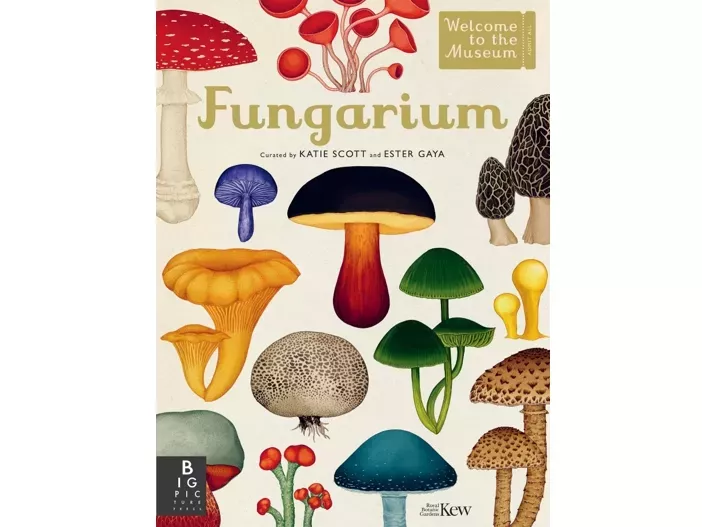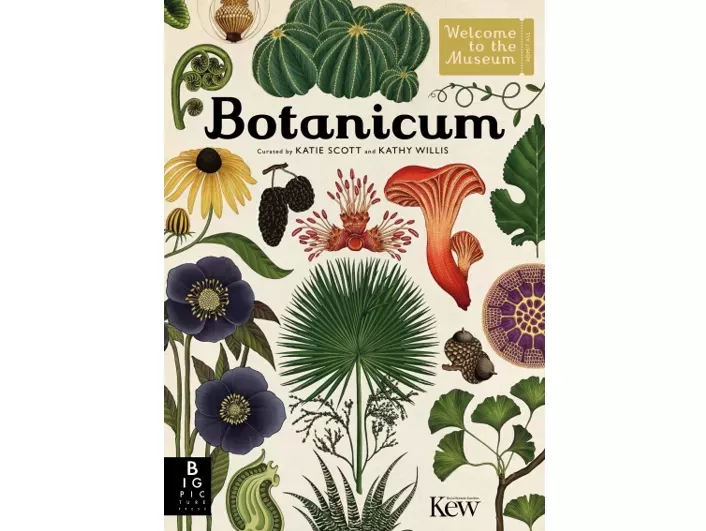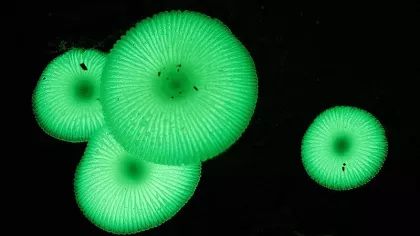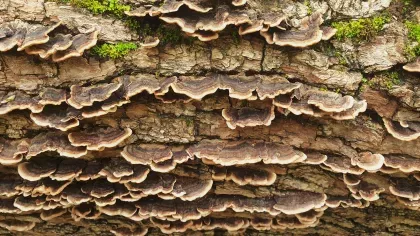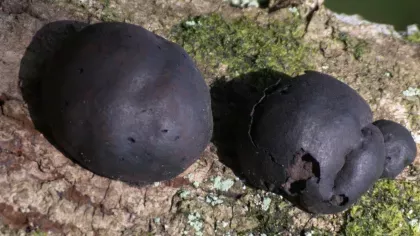31 October 2019
The wonderful world of fungi
What exactly are fungi and why are they so important?

Fungi are vital to all life on Earth, from nutrient recycling, to the food and drink we consume.
Neither plants nor animals, fungi belong to their own separate group called a kingdom.
But how are fungi different to plants?
- Unlike plants, fungi are unable to source their energy from the sun via photosynthesis. Instead, most fungi (except for lichens) release enzymes into the environment that digest organic matter and then absorb it.
- Most fungi have cell walls that are made up of chitin, the same substance that is found in the external skeleton (exoskeleton) of insects and shells of crabs. Whereas plant cell walls are made of cellulose.
- Fungi store their food reserves as glycogen, while plants store them as starch.

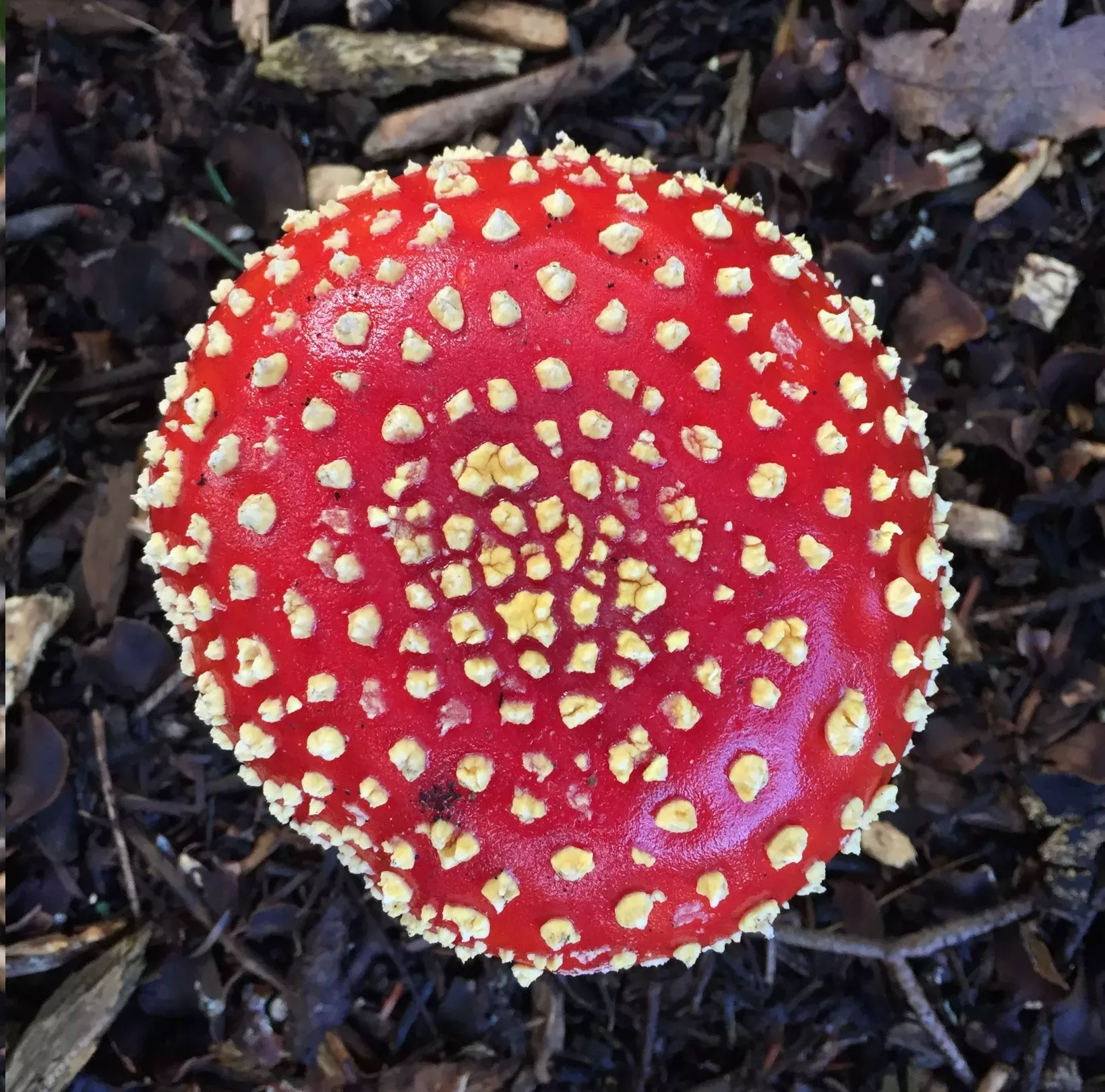
More than meets the eye
The visible component of a fungus is the reproductive structure; an example of which is a mushroom.
These structures produce spores which upon dispersal give rise to new fungi.
The reproductive structure is only a fraction of the total fungus.
The main body of the fungus, in most cases, is made up of many fine threads called hyphae that group together to form a vast network called mycelium.
Mycelium exist behind the scenes in the soil, amongst dead organic matter, and in plants.
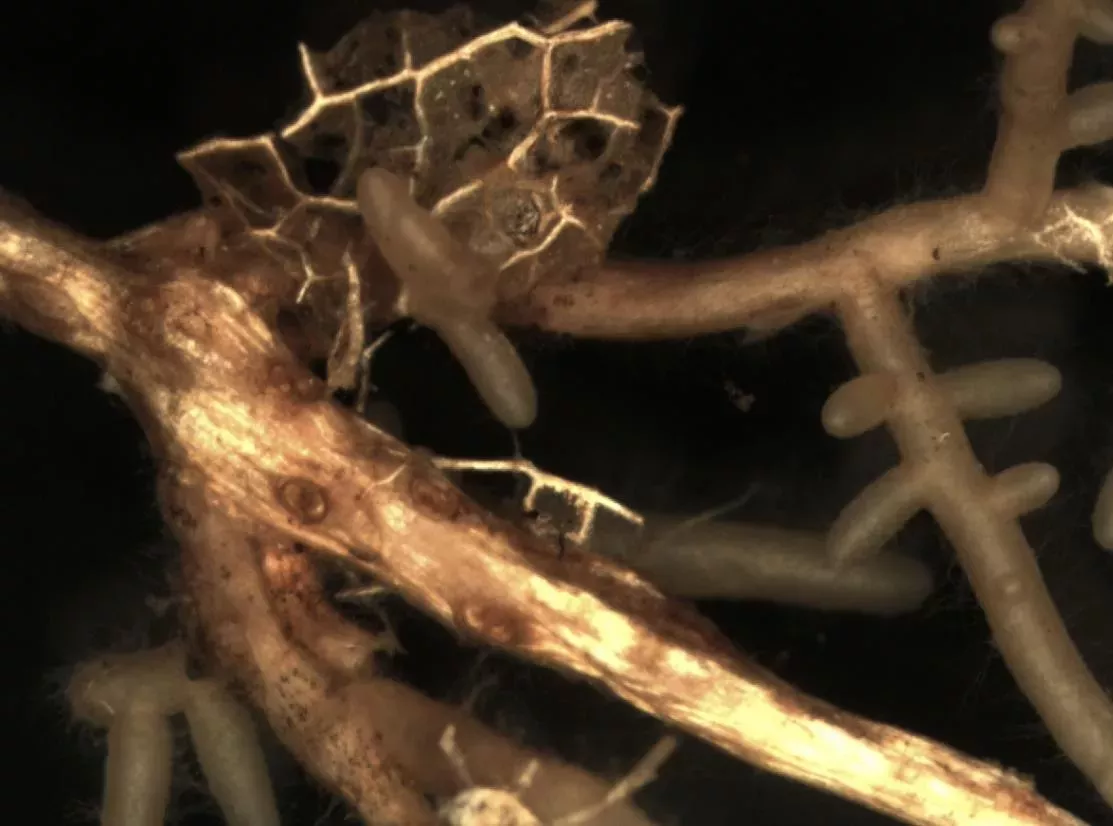
A perfect partnership: Plants and fungi
Plants rely heavily on fungi for survival. Fungi that form mutually beneficial relationships (mutualisms) with plants fall into two general categories:
1. Mycorrhizal fungi (associated with plant roots)
It is estimated that around 90% of plants on earth have mycorrhizal fungi associated with their roots.
Mycorrhizal fungi extend the plant root systems and help plants access nutrients and water from the soil.
In return, plants provide mycorrhizal fungi with sugars from photosynthesis.
2. Endophytic fungi (live within plants)
All plants harbour endophytic fungi within their roots, shoots and/or leaves.
Endophytic fungi existing within plants can improve plant growth and resistance to herbivory, disease, drought and heat-stress.
The endophytic fungi benefit from the plant by receiving nutrients and a host to live in.
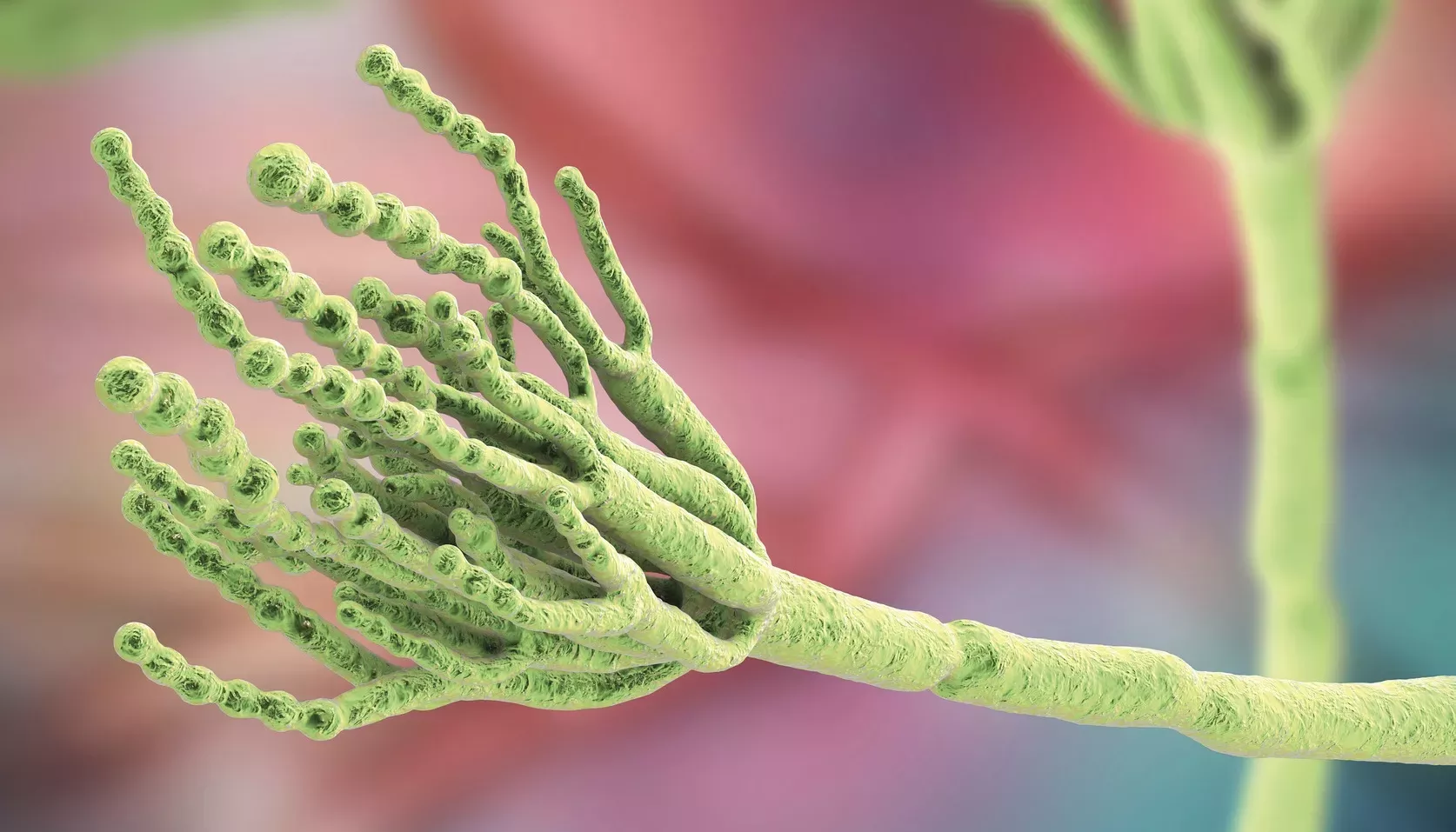
Circle of life
Fungi are vital for nutrient recycling in ecosystems.
They use digestive enzymes to break down wood and other plant matter.
This stops dead wood and leaves building up in forest ecosystems and helps recycle nutrients back into the soil that help plants to grow.
Fungi are also incredibly important to humanity. They form the basis of products that we rely heavily on in day to day life, including food, drink, and medicines.
For example, the widely used antibiotic Penicillin is derived from the fungus Penicillium rubens.
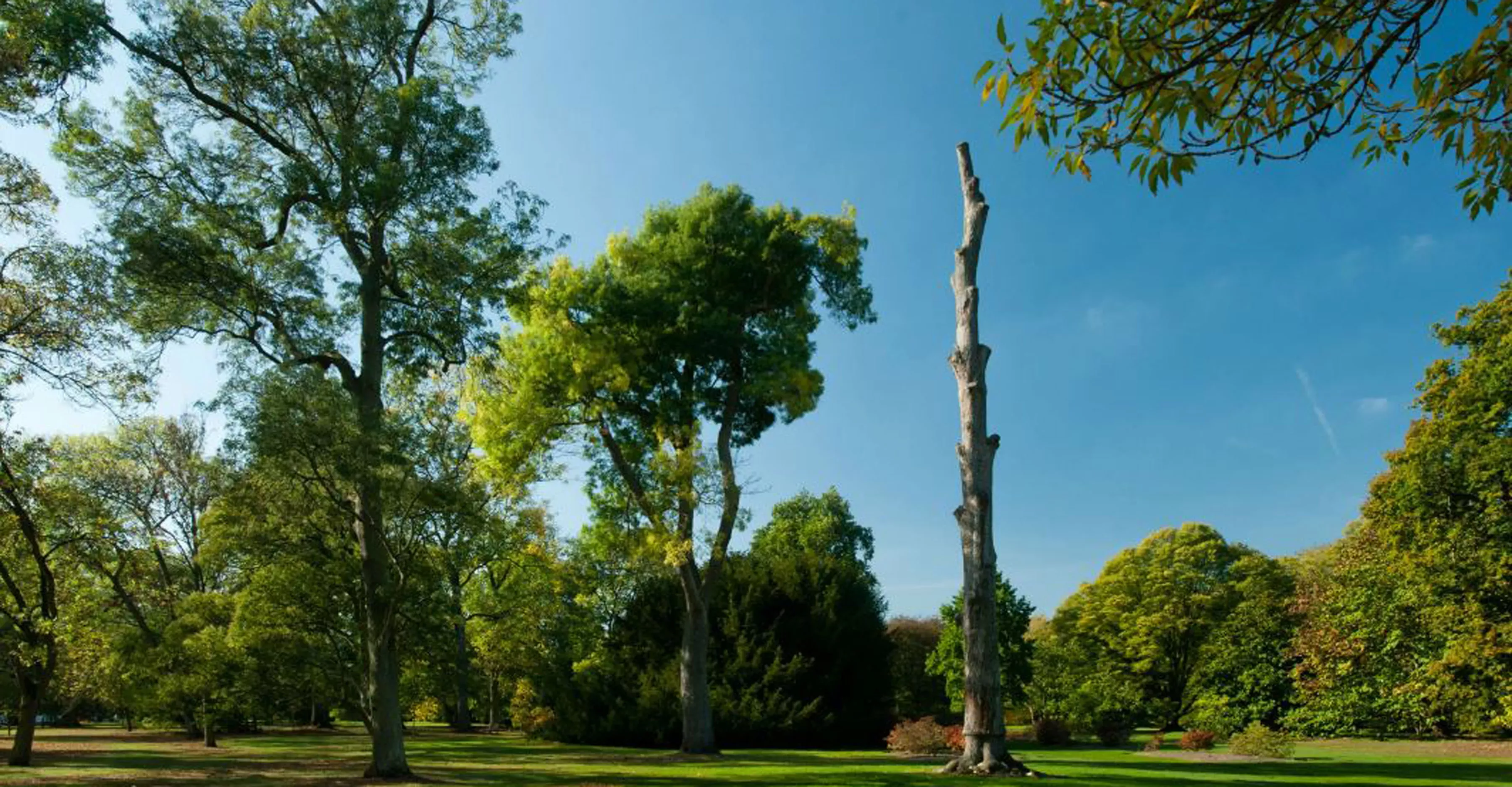
Not all fungi are 'fun-guys'
Fungi can also cause devastating plant and animal diseases and pose huge threats to crop yields and food security.
The ash dieback fungus (Hymenoscyphus fraxineus), for example, severely affects ash trees (Fraxinus spp.).
Climate change has resulted in this disease-causing fungus (pathogen) spreading outside its native region of Asia. It now threatens to dramatically change woodlands across the UK and Europe.
Not all fungal pathogens are bad, however. They can help maintain plant diversity by attacking more abundant plant species and preventing one from dominating.
Did you know?
- 93% of the world’s fungal species are yet to be discovered/described.
- Fungi are more closely related to animals than plants.
- Scientists have found that the fungal mycelium network below ground provides a method of communication between plants, otherwise known as the ‘wood wide web’.
Fungi at Kew
A large part of the scientific research conducted at Kew is focused on the diversity and importance of fungi.
Behind the scenes, Kew has the largest and oldest collections of fungi in the world – the Fungarium - containing over 1.25 million dried fungi specimens from every part of the globe.
You can come explore fungi at Kew for yourself, this time of year a whole range of fungi are visible at the log walk and surrounding wild areas.
